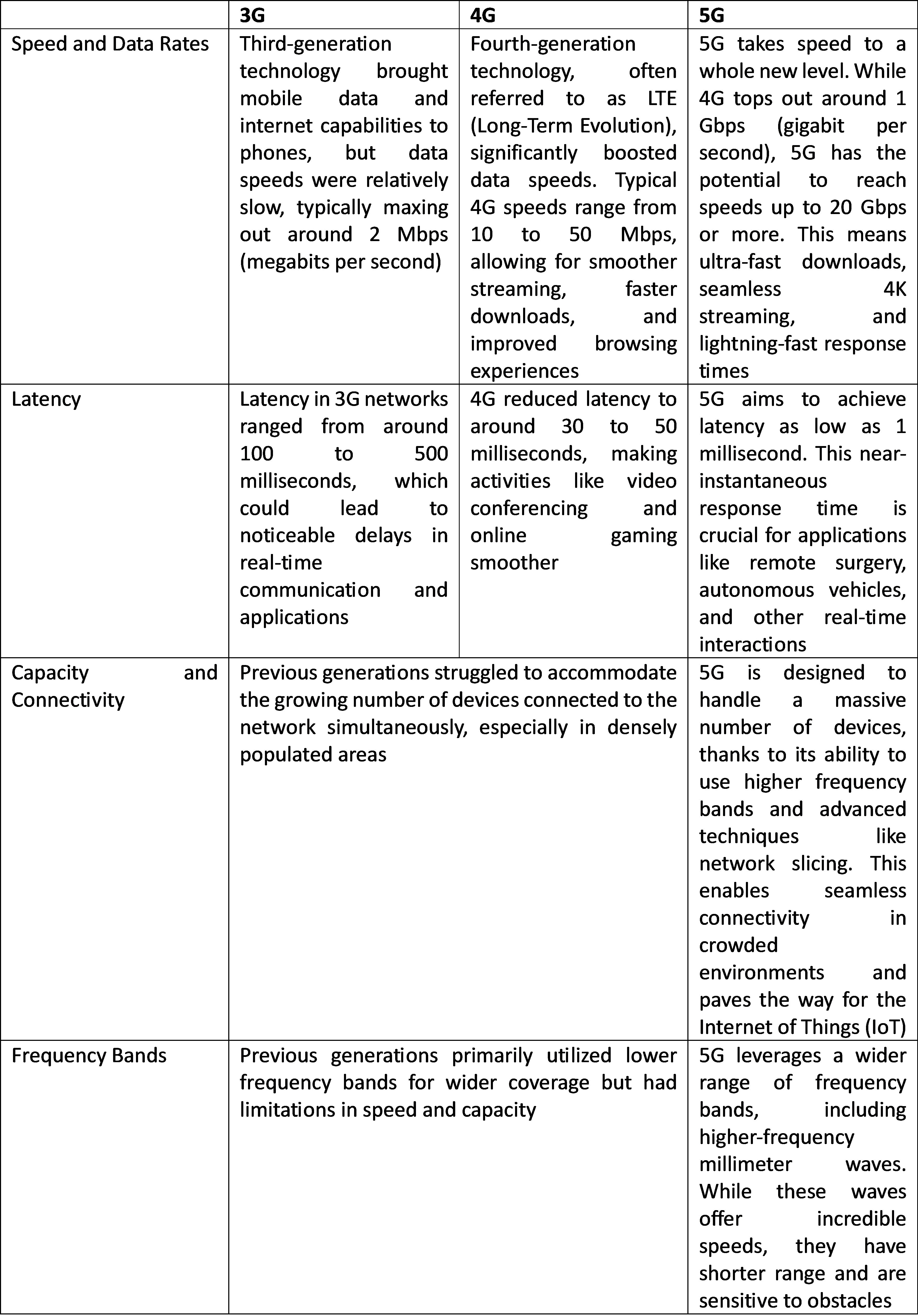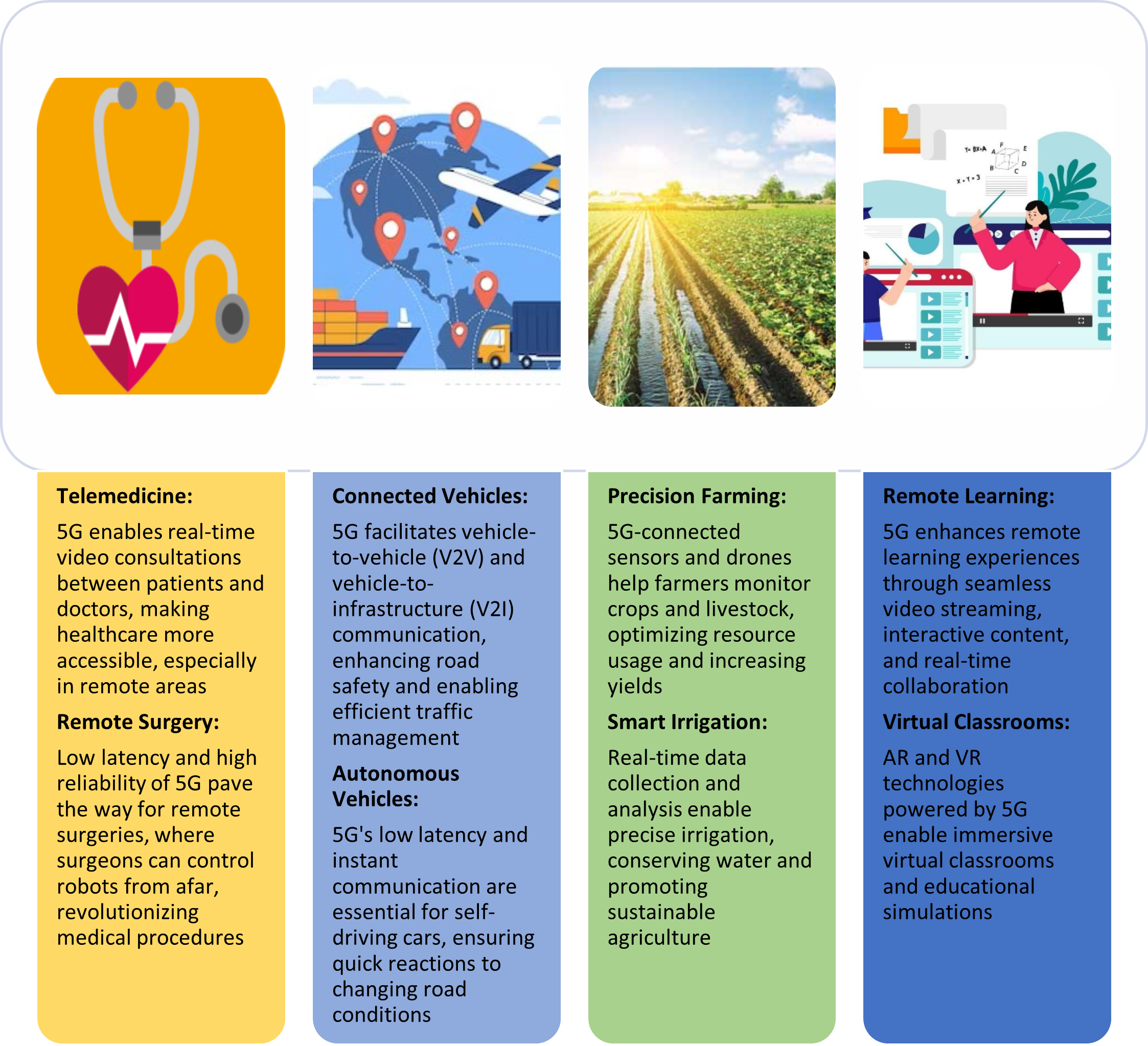5G Technology and Its Transformative Impact on Communication and Connectivity.
By Piumi Samarakoon .What is 5G Technology?
5G, short for fifth generation, represents a revolutionary advancement in wireless communication technology. It’s not merely an incremental upgrade; it’s a comprehensive reimagining of how data is transmitted and received wirelessly. At its core, 5G aims to provide significantly higher data speeds, incredibly low latency, increased capacity, and improved reliability compared to its predecessors, 3G and 4G.
Differences from Previous Generations

Key Benefits of 5G
5G technology offers a range of benefits that have the potential to transform industries, enhance user experiences, and enable new applications. Here are some of the key benefits:
- Faster Data Speeds: 5G delivers unparalleled data speeds. This means quicker downloads, seamless streaming of high-definition content, and faster loading times for websites and applications.
- Ultra-Low Latency: 5G’s ultra-low latency, often reaching as low as 1 millisecond, enables real-time interactions. This is essential for applications like online gaming, remote surgery, and autonomous vehicles, where even the slightest delay can have significant consequences.
- Greater Capacity: With the ability to handle a massive number of connected devices simultaneously. This enables the seamless operation of smart cities, smart homes, and industrial IoT applications.
- Augmented Reality (AR) and Virtual Reality (VR): 5G’s low latency and high data speeds are ideal for AR and VR applications, creating immersive experiences with minimal lag. This opens new opportunities in entertainment, education, training, and remote collaboration.
- Energy Efficiency: 5G’s design includes energy-efficient features, which not only reduce operational costs for network providers but also contribute to a more sustainable digital ecosystem.
Revolutionizing Industries Through 5G Technology

Challenges and Considerations in Implementing 5G Technology While 5G technology holds immense promise, its deployment and adoption also come with a set of challenges and considerations that need to be addressed. These factors can impact the successful rollout and utilization of 5G networks. Here are some key challenges to keep in mind:
- Infrastructure Development
- Coverage and Range
- Interference and Line of Sight
- Spectrum Allocation and Regulation
- Privacy and Security
- Energy Consumption
- Cost and Affordability
- Health and Safety Concerns
Addressing these challenges requires collaboration among governments, technology providers, regulatory bodies, and other stakeholders. Strategies for managing these considerations may involve careful planning, continued research, regulatory coordination, and investment in both infrastructure and cybersecurity measures. By proactively addressing these challenges, the potential of 5G technology to revolutionize communication and connectivity can be realized more effectively and responsibly.
Impact on Society and Lifestyle
The widespread adoption of 5G technology is poised to bring about profound changes in the way we live, work, and interact with the world around us. Here’s how 5G’s influence is expected to shape society and lifestyle:
- Enhanced User Experience
- Smart Cities and Infrastructure
- Remote Work and Telecommuting
- Healthcare Transformation
- Education Revolution
- Entertainment Evolution
- IoT Integration
- Transportation Innovation
- Environmental Impact
In essence, 5G technology stands to reshape how we interact with technology, each other, and our environments. From transforming industries to enhancing personal experiences, 5G’s influence extends across various facets of society, shaping the way we live, work, and create in a hyper-connected world.
Challenges and Considerations
Infrastructure Investment: The widespread deployment of 5G requires substantial investments in infrastructure, including cell sites, fiber optics, and backhaul networks. Regulatory Harmonization: Global standards and regulatory alignment are crucial to ensuring seamless cross-border connectivity and compatibility. Spectrum Allocation: Proper allocation of frequency bands for 5G use is essential to ensure efficient and interference-free operations. Security and Privacy: As 5G enables greater connectivity and data exchange, cybersecurity and data privacy measures must be robustly addressed. Digital Divide: Ensuring equitable access to 5G services for all communities, including rural and underserved areas, remains a challenge.
In summary, the future of 5G is promising and transformative. Its impact will be felt across industries, governments, and everyday lives, leading to increased connectivity, efficiency, and innovation. As global adoption continues and technology evolves, 5G will shape the foundation of a digitally connected and dynamic world.

